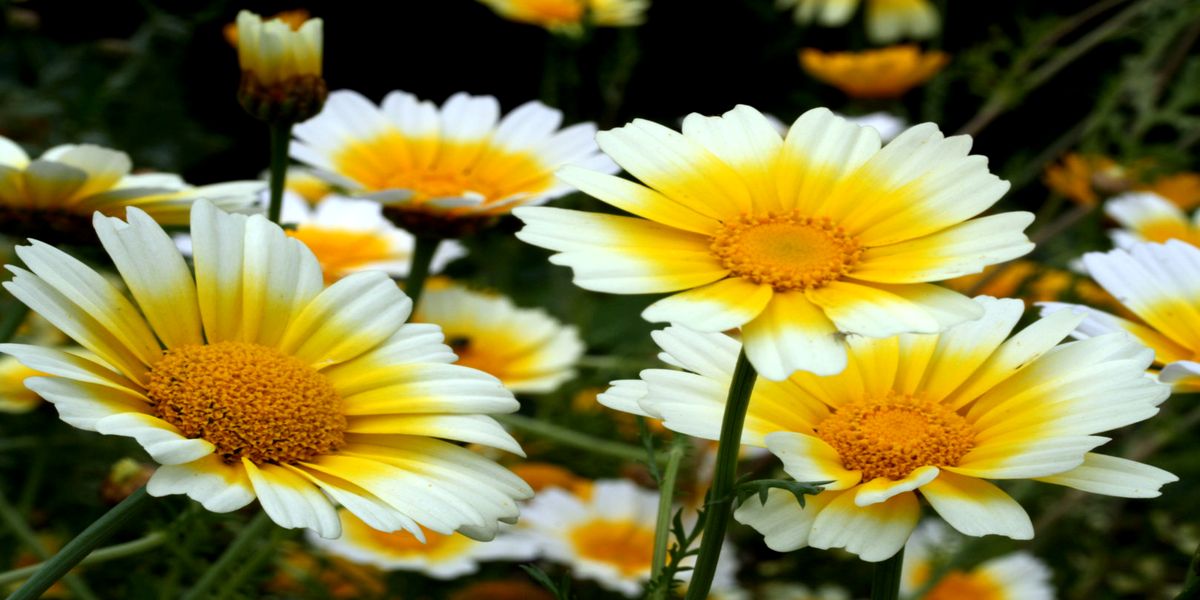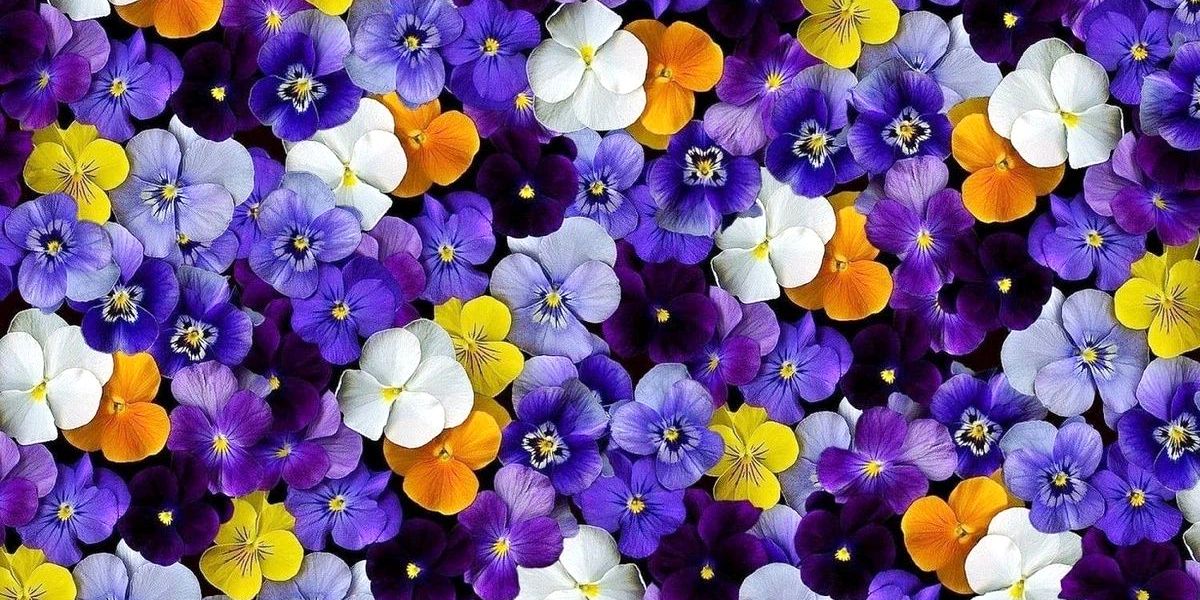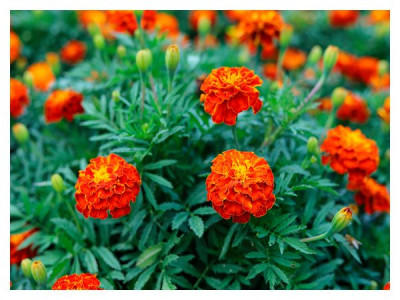Edible flowers are not new. In high cuisine, they have long been used to decorate dishes and give them new flavors. If you would like to diversify your diet, inspired by the ideas of famous chefs (and by a lucky chance you have your own plot of land), this list of plants will definitely come in handy.

Roses, chrysanthemums, mallows, nasturtiums, chamomiles, dandelions - the list of edible flowers is almost inexhaustible. Floristics in cooking is an unusual, but bright section of it. We talk about popular flowers that you can eat and the basic rules for eating flowers.
List of flowers to eat

Borage
Borage (borage, borage) blooms beautifully and smells like cucumber. Almost all parts of the plant are used in cooking. Young leaves, which taste like cucumber to some, and onions to others, are added to salads, soups and sauces. The roots of the plant, collected in autumn, are used in the preparation of cheeses, curds, butter, vinegar, wine and syrup. The shoots are blanched, sautéed or fried in batter and served as a side dish. Borage flowers are also edible. They are dried, eaten fresh or candied. In the latter case, they become a spectacular decoration for confectionery.

Chrysanthemum
Vegetable variety chrysanthemums - Shungiku - are the signature dessert dish of Chinese restaurants. The petals are separated, fried in oil and served with a scoop of ice cream. Chrysanthemum is one of the most revered flowers in the East. The Japanese prepare main dishes from the stems and leaves of the plant, and decorate glasses with sake with petals, wishing the guest longevity and success.

Calendula
Calendula petals are good both fresh and cooked. In cooking, the flower is often used as a substitute for expensive saffron - calendula gives the same subtle peppery flavor and slightly tints the dish in a yellowish-orange color. Plants are used to flavor soups, salads, homemade liqueurs and tinctures.

Dandelion
Remember Ray Bradbury's famous Dandelion Wine? Do not underestimate this spring plant - it is suitable not only for making homemade wines. Dandelion - although a weed, it is very useful and edible. Young and juicy leaves of the flower diversify fresh vegetable salads, cabbage soup and soups. Only it is better to use greens in moderation - otherwise a pronounced bitter taste cannot be avoided.
To remove excess bitterness from dandelion, soak the leaves for about half an hour in salt water.

Pumpkin flowers
The flowers of all vegetables in the gourd family can be eaten. They are even outwardly similar - large, with a yellowish or orange color and a subtle, almost imperceptible aroma. In many countries of the world, pumpkin flowers are widely used in cooking. They are fried in oil, pre-stuffed or dipped in batter. Sounds too exotic? And you try it - for example, with soft cheese filling.

Day-lily
There are only a few varieties of daylilies suitable for food. If you are lucky enough to find them and grow them in your summer cottage, get ready to try the delicacies of Chinese cuisine. Oriental chefs use almost all parts of the flower in cooking. The leaves are added to salads, the roots are stewed, baked, boiled and fried.
Buds are a special delicacy with an unusual combination of flavors and a rich supply of vitamin C. They are stuffed with meat and vegetables, fried in batter, preserved in marinade, added to soups and main dishes.

Marigolds thin-leaved
Not all marigolds are edible. There are only two varieties of plants that can be eaten: Lemon Jam and Mandarin Jam. As their name suggests, these marigolds have a delicate citrus flavor and pleasant aroma. It is impossible to use the entire inflorescence as a whole - before cooking, it is necessary to separate the petals and rinse them thoroughly with water. Marigolds complement fish dishes, chicken, sweet pastries, compotes and desserts well. In general, there are many options for culinary experiments!

Nasturtium
Nasturtium is a ready-made summer seasoning. The flowers of the plant give dishes a piquant spiciness, so they are not recommended to be used in large quantities.
Nasturtium petals are also used to color various drinks, including alcoholic cocktails.
And from the green seeds of the plant, the famous "capers" are prepared, which can hardly be distinguished from the real ones. The collected young seeds are first salted for a day, and then marinated in an acetic solution for two weeks. It’s worth the trouble - the dish turns out to be very interesting!

Pansies
Pansies are a very beautiful flower with a mild, minty taste. Whole inflorescences are used in cooking - all its parts are edible. The flowers are candied and used to decorate cakes, pastries and other desserts. Yes, and in salads, violet looks just great - it’s even a pity to eat!

Hyssop anise
Hyssop is a herbaceous plant with a strong spicy aroma. Its popularity in cooking is largely due to the versatility of the flower. It helps to reveal the taste of meat dishes, and looks appropriate in vegetable salads, and goes well with cottage cheese. As they say, and to the feast, and to the world!

Basic rules for using flowers for food
- Collect flowers for food in areas where the ecological situation is good. You can not eat flowers that grew near a busy highway or in a pasture.
- Make sure that the flowers have not been grown with mineral fertilizers and have not been pollinated with chemicals against pests.
- If you are allergic, be careful when using flowers in food and keep antihistamines on hand. Don't add flowers to your meals that you've previously been allergic to.
- Before cooking, remove the stamens and pistils of flowers. They are rarely dangerous to health, but they can be very bitter or add a cloying sweetness to the dish.
- You do not need to prepare a large portion if you are trying to add this flower to a dish for the first time. Eat a few of its petals separately first and see if you want to feel this taste in the finished dish.













